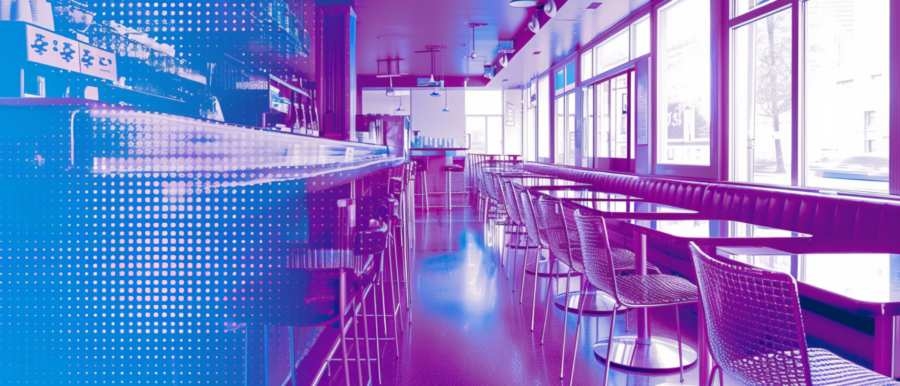A Culinary Snapshot Guide to Restaurant Photography

Mastering the Art of Restaurant Photography: A Culinary Snapshot Guide
Stepping into the world of restaurant photography is like entering a bustling kitchen during dinner service: it's all about timing, precision, and a dash of creativity. Capturing the essence of a restaurant's atmosphere and the soul of its dishes in a photograph requires more than just a good camera. It's an art form where light, angle, and composition play together in harmony to create mouthwatering images that tell a story. Here are some tips to help you plate up some picture-perfect shots.
Lighting: The Main Ingredient
Just as no chef would dare to cook in the dark, no photographer should underestimate the power of lighting. Natural light is your best friend, offering a softness and authenticity that can make dishes look inviting. Aim for a table near a window during the golden hours of early morning or late afternoon for that perfect glow. However, when natural light isn't on the menu, a well-placed softbox or reflector can help avoid the harshness of direct flash, ensuring your subject is seen in the best possible light.
Composition: Plating Your Shot
In photography, as in gastronomy, presentation is key. Before snapping away, take a moment to compose your shot. Use the rule of thirds to create balance and interest, allowing the eye to wander through the frame. Don't be afraid to rearrange table settings, utensils, and even the food itself to achieve the perfect composition. Remember, you're not just capturing a dish; you're telling the story of an experience.
Angle and Perspective: Finding the Sweet Spot
The angle of your shot can dramatically affect the viewer's perception of the dish. While a bird's-eye view is great for showcasing the layout of a table or the symmetry of a dish, a shot from the diner's perspective can create a more intimate and inviting feel. Experiment with different angles to find the one that best highlights the unique qualities of each dish, whether it's the texture of a crusty loaf of bread or the vibrant colors of a fresh salad.
Focus on the Details
In a world where we eat with our eyes first, the devil is in the details. A close-up shot that captures the glisten of a sauce or the sprinkle of freshly chopped herbs can elevate a dish from ordinary to extraordinary. Use a shallow depth of field to blur the background and draw attention to these details, making the viewer's mouth water with anticipation.
Setting the Scene
While the food is undoubtedly the star of the show, don't forget about the supporting cast. The ambiance of the restaurant, from the texture of the table linens to the pattern of the china, contributes to the overall dining experience. Capture these elements to give context to your culinary shots, creating a narrative that extends beyond the plate.
Embrace the Art of Editing
After the plates have been cleared and the final shot taken, the journey of restaurant photography continues into the realm of editing. This stage is like the seasoning process in cooking—essential for bringing out the best flavors but requiring a delicate touch. Adjusting the brightness, contrast, and saturation can enhance the photo's appeal without making it look unnatural. Remember, the goal is to make the food look as delicious digitally as it does on the plate, not to transform it into an unrecognizable feast.
Collaborate with the Chef
A chef's insight can be invaluable in restaurant photography. After all, who better understands the essence of a dish than the person who created it? Collaborating with the chef can provide you with insider knowledge on the highlight features of each dish, the best angles to capture them, and even the story behind their creation. This partnership not only enriches the photographic content but also ensures that the images accurately reflect the culinary artistry of the restaurant.
Patience and Timing: The Secret Sauce
Patience is a virtue, especially in restaurant photography. Sometimes, capturing the perfect shot means waiting for the right moment when the steam gently rises from a dish or the natural light illuminates the table just so. It's about timing your shots to coincide with these fleeting moments that can turn a good photo into a great one. Like a chef waiting for the perfect sear on a steak, a photographer's patience can make all the difference in the final image.
Storytelling Through Your Lens
Ultimately, restaurant photography is about storytelling. Each photo should convey a sense of place, taste, and experience that transports the viewer right into the heart of the restaurant. From the anticipation conveyed by a perfectly set table to the satisfaction of a dessert plate with just a few crumbs left, your images should evoke the emotions and atmosphere of dining at the restaurant. It's this ability to tell a story through food photography that can turn viewers into visitors, eager to experience the culinary journey for themselves.
Concluding Courses
Mastering restaurant photography is a journey of exploration, experimentation, and expression. It's about capturing the beauty of culinary creations in a way that honors the chef's work and entices the viewer's senses. By focusing on lighting, composition, detail, and storytelling, you can create images that do more than just showcase food; they celebrate the entire dining experience. So, grab your camera and step into the kitchen—there's a whole world of flavors waiting to be captured through your lens.
|
|






